 |
 |
 |
 |
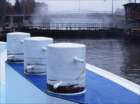 |
 |
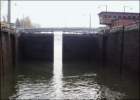 |
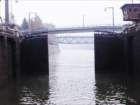 |
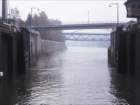 |
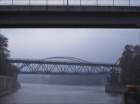 |
Page 14:
DAY 11 – November 1, 2005 - Passau, Germany
(Uniworld version) The ship cruises through the night to Passau, where the Inn and the Ilz Rivers meet the Danube for a morning arrival. One of Bavaria’s oldest and most beautiful cities, Passau is Germany’s eastern-most port. With its charming cobblestone streets and graceful arcades, Passau is perfect for exploring. Visit St. Stephan’s Cathedral, housing the largest pipe organ in the world. Then enjoy a guided walk through the oldest part of Passau. Cruise overnight to Austria.
DAY 11 – November 1, 2005 – Passau, Germany
(my version) All Souls Day is a holiday in Europe. All the shops and museums are closed. We cannot get into the Churches as there will be services. We are on the Danube – there is thick fog and its cold outside. Pat’s feeling much better today, thank heavens.
The lock and fog picutures are just before Passau.
We did not go on the walking tour of Passau but wrote a few post cards (they mail them from the front desk on the ship for a nominal fee) and are participating sporadically in the daily quiz. After lunch we go by bus to a monastery and to Shearding in Austria.(optional tour) and are back for dinner when the ship sails for Melk. The River Duchess Crew does a show in the lounge. Doris sings beautifully
DAY 11 – November 1, 2005 – Rhine – Main – Danube – Canal
Fossa Carolina – The idea of linking the Rhine and the Danube originated far back in history. Since the days of Charlemagne, it has stirred emotions in a variety of ways and remained alive throughout the centuries. And not only the idea is much more than 1000 years old, it was twice translated into practice. In choosing the location the choice was automatically Franconia, an area in the heart of Europe. Charlemagne started this project in 793, trying to link two rivers by a roughly 2000 meter – 6562 feet long canal, the Altmuhl and the Swabian Rezat. It could not be completed on account of adverse weather conditions, logistic difficulties and a changed military constellation. Near Graben, a village near Weissenburg, “Charlemagne’s Ditch”, the Fossa Carolina, is a reminder of that first linking Rhine and Danube.
DAY 11 – November 1, 2005 – Ludwig – Danube – Main Canal.
Bavarian King Ludwig 1st revived the idea of connecting Main and Danube in the 1820s. The stretch between Bamberg and Kelheim was started in 1837 and finished by 1846. It required a total of 66 locks for the 178 km (111 miles). The Ludwig-Main-Danube Canal suffered however from the insufficient regulation of the Main and the Danube, for which the canal barge was unsuitable and thus unprofitable. Consequently the horse-towed vessels on the canal could not stand up to the powerful competition from the railway. So the Ludwig Canal, though still used for shipping up to 1940, is now nothing but a scenic relic of a bygone age.
DAY 11 – November 1, 2005 - Rhine – Main – Danube – Waterway
From the North Sea via Rhine, Main, Main-Danube-Canal and Danube to the Black Sea there is a distance of 3500 km (2176 miles.). The canal itself is 171 km (106) miles. It was started in 1960 and completed in the fall of 1992 – opened on September 25, 1992. Behind Nurnberg, the Canal has to overcome the Franconian Jura mountain – the European water divide between Rhine and Danube – and has to climb up to the summit 406 meters (1332 feet) above sea level. The Main River at Bamberg lies 175 meters (574 feet) lower and the Danube 68 meters (223 feet) lower than the summit.
| Home | About | Gardening | Photography | Travel | Victoria | Guestbook | Blog | Links | Series | MyWalk | Car Stuff | ||||||||||||||||
Uploaded: November 30, 2022
Photo album created by M. M. Meehan
Photo album created with Web Album Generator